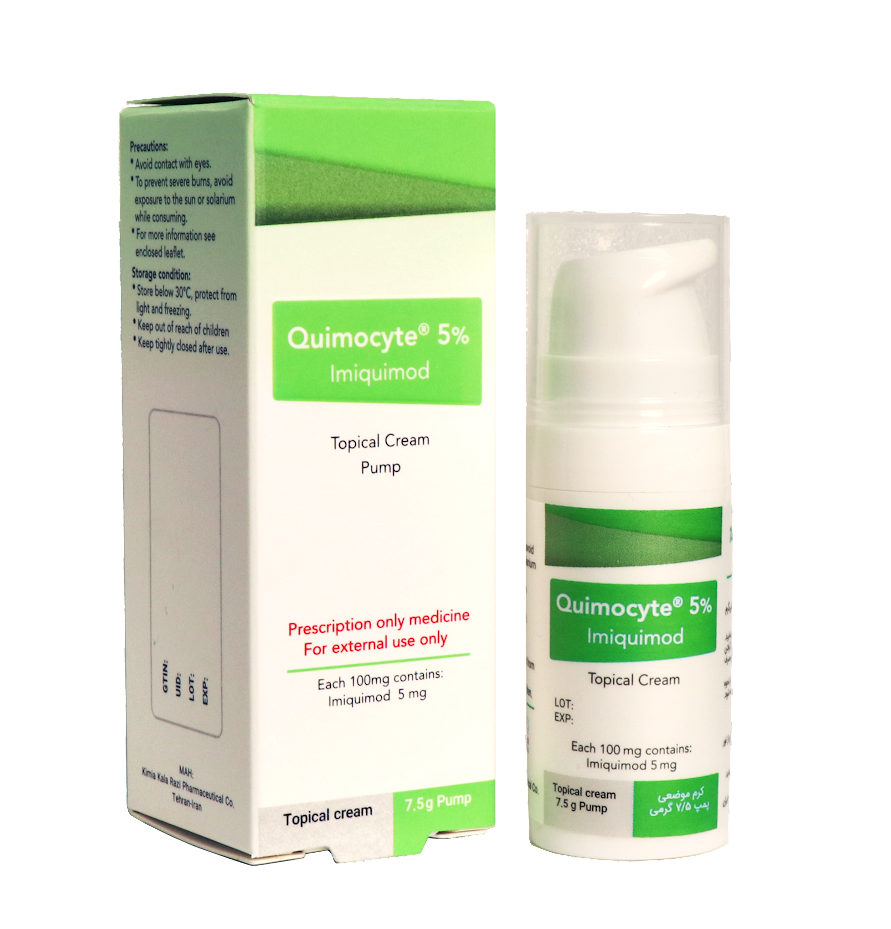Quimocyte ® 5%


Active ingredients:

Indication:

Product differentiation:
Enhanced dermal drug delivery prepared with oleic acid
Higher patient compliance and easy to use
Dosage adjustment by pump

Dosage:
Imiquimod should be applied for a full 16 weeks to a defined treatment area on the face or scalp (but not both concurrently).
Background
Imiquimod is a medication that acts as an immune response modifier that is used to treat genital warts, superficial basal cell carcinoma, and actinic keratosis. Scientists at 3M’s pharmaceuticals division discovered the drug and 3M obtained the first FDA approval in 1997.
Drug category
Immune response modifiers
Pharmacology and mechanism of action of the drug
Direct action is by binding to toll-like receptors (TLR) seven and eight of macrophages, monocytes, and dendritic cells and by induction of apoptosis.
Avoid exposing your skin to sunlight, sunlamps, or tanning beds while you are using this medicine. Always use sunscreen or sun-blocking lotions and wear protective clothing and hats. If you are being treated for external warts, avoid having genital, oral, or anal sex while the medicine is on your skin.
US FDA pregnancy category C
Store this medicine at below 25 ° C, and away from light and moisture.
Keep this medicine out of the reach and sight of children.
Genital wart: Apply 3 times a week until total clearance of warts or for a maximum of 16 weeks.
sBCC: Apply 5 times a week for 6 weeks to biopsy-confirmed superficial basal cell carcinoma and include 1 cm margin of skin around tumor.
Actinic keratosis: Apply 3 times a week until total clearance of warts or for a maximum of 16 weeks.
Imiquimod cream is indicated for the topical treatment of: External genital and perianal warts (condylomata acuminata) in adults. Small superficial basal cell carcinomas (sBCCs) and actinic keratosis in adults.


